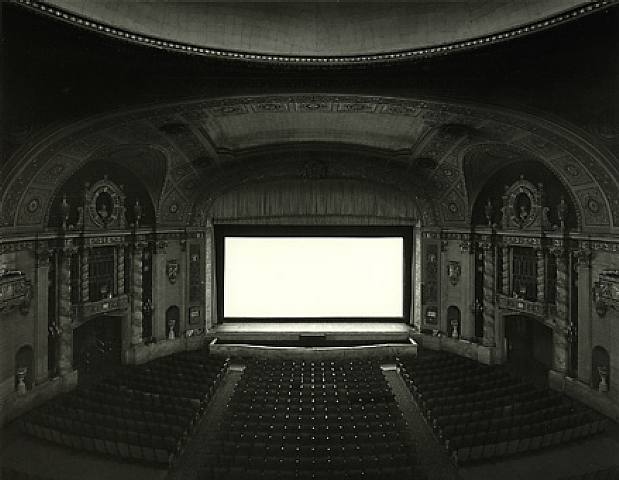
Hiroshi Sugimoto, "U.A. Walker," New York, 1978.
News of artists famous in one field crossing over into another is very often met with public derision. Bruce Willis, one of the most talented pub-rockers of the late 1980s (Return of Bruno), fell foul of the critics when he tried to branch out into acting (The Whole Nine Yards), as did indie songstrel Scarlett Johansson (Match Point) and rap supremo Joaquin Phoenix (Signs). De Kooning-esque abstractionist Paul McCartney’s forays into popular music have similarly met with the critical thumbs-down, and latterday expressionist Bob Dylan’s adenoidal folk-rock has received little more than shrugging indifference on the international music circuit.
The message seems to be that there’s a kind of selfishness to cultural versatility and a public unwillingness to square fictionalized and “real” identities. (Perhaps the critics might have been kinder to Willis’s Under the Boardwalk if it had been released under the name of John McClane…well, there’s no point in wishing your life away). In any case, contemporary artists – operating as they do on the fringes of mainstream culture – are in the best position to facilitate an effective crossover into the mainstream, Schnabel’s professional volte-face being its axiom. Cultural crossover is, in other words, invariably outside-in, never effectively the other way around. Just ask Russell Crowe (wear a helmet, though).
Steve McQueen’s disheartening pavilion at this year’s Venice Biennale was conducted very much as mainstream cinematic spectacle. You queued up in time-honored British fashion (imagine that at the French pavilion!) to be informed of your slot, waited around, got ushered in, and were told that you “weren’t allowed to leave for the duration of the film” (I paraphrase, but that’s pretty much what we were told). Naturally, this ruffled feathers in Venice, for a crowd accustomed to a 10-second whip-around in search of free tote bags, and ran counter to conventional experiences of art, directly proportional as it usually is to the duration of the audioguide, tour guide’s explanation, or syntactic adroitness of wall text. (Picture enforced viewing times for a Robert Ryman show, for instance, and you get the idea). For contemporary artists, cinema offers an opportunity to condition the duration of the viewer’s experience; after all, you’ve paid ten quid to get in anyway, and you might as well stay til the end to see who the dolly grip is. Little surprise, then, that Matthew Barney chose to screen some of his arduous-at-best Cremaster films at arthouse cinemas as well as galleries, or that Douglas Gordon’s lugubrious Zidane: A 21st-Century Portrait was released “as” a mainstream film. And the forthcoming theatrical release of Sam Taylor-Wood’s Nowhere Boy, a biopic of John Lennon’s childhood, will provide the video artist with a captive audience her ponderous and often pompous video works are rarely granted.
This foray into the mainstream, soon to be followed by an as-yet untitled project by the Chapman Brothers which I’m hoping will be turn out to be Hostel IV, might be read as testament to the increased visibility of contemporary artists in mainstream culture, but there is a clear demarcation, certainly in McQueen’s work, between his cinematic and artistic’output – a demarcation seemingly ignored in his Venice installation, which really should have been submitted for the film festival later in the year. The language of cinema forces the artist’s hand as well as the audience’s presumed attention – after all, you can (and should) wander out of the majority of displays of video art whenever you like, whereas leaving a cinema, clambering over snogging couples while scattering popcorn into their laps, is awkward at best and, strangely, frowned-upon (in Britain, anyway). For someone of middling talent like Taylor-Wood, the narrative and durational demands of cinema might shear off some of her worst indulgences (e.g.); comparing McQueen’s film, Hunger, with his art video, Giardini, is evidence enough of the ameliorative effects of cinematic convention. Still, it’s hard not to somewhat begrudge, as anyone with any stake in marginal cultural activity must (and, let’s face it, contemporary art, regardless of its glamour quotient, economic symbolism or intermittent tabloid friendliness, is a marginal cultural activity, like scat or bodybuilding), contemporary culture’s mainstream magnetic pole.




Pingback: What’s Cookin at the Art21 Blog: A Weekly Index | Art21 Blog